The coastline around East Lane has, over the centuries, experienced several episodes when defence works became necessary due to the risk of invasion. Recommendations for the defence of Bawdsey were made as early as the sixteenth century. In the early part of the nineteenth century fears of invasion by Napoleon led to the building of seven Martello Towers. During the First World War several concrete pillboxes were built and one circular example still in good condition can be seen today.
The Second World War and the Emergency Coastal Defence Programme
In May 1940 it became clear that a full-scale invasion of the United Kingdom was a distinct possibility, which led to the fortification of the coastline on a hitherto unprecedented scale. The Royal Navy provided some 150 six-inch guns, most of which had been taken off warships broken up after the First World War and subsequently held in store for the purposes of providing more substantial defences. This ‘Emergency Coastal Defence Battery’ programme saw these guns placed in pairs at vulnerable points in order to defend against enemy shipping. The primary role of these batteries was to engage hostile vessels and to destroy the contents of beached craft.
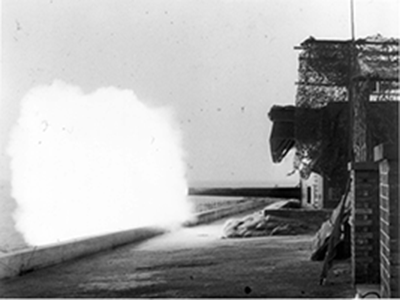
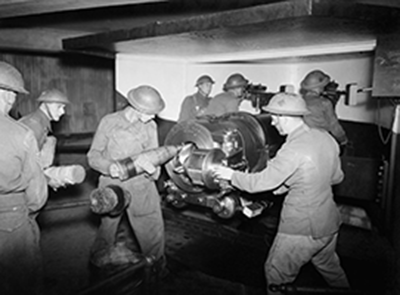
Image (left): Wartime photograph of the Emergency Coastal Defence Battery (ECDB) at Aldeburgh test firing its guns. Image (right): and Staged photo of the interior of an ECDB gunhouse at Felixstowe
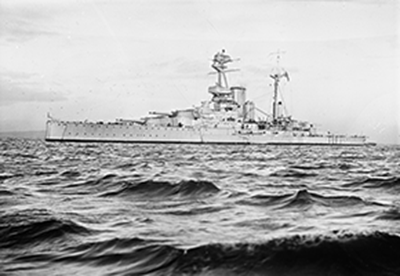
Image: HMS Royal Sovereign - one of the battery’s guns came from this vessel (center).
The Bawdsey Battery, 1940 - 1942
During a reconnaissance in July 1940 it was decided that there was no possibility to site a battery in the Bawdsey area due to the low lying coastline and the certainty than any battery would be liable to flooding.
Batteries were built at Aldeburgh to the north and Felixstowe to the south but the intervening long stretch of unguarded coastline was clearly of concern to military planners. In February 1942, 332 Battery Royal Artillery who had manned Foulness Battery in Essex since 1940, transferred, together with their guns, to the newly constructed works here at East Lane.
The Emergency Coastal Defence Batteries conformed to a similar overall layout but in detail could vary enormously. Bawsey followed the basic principle of having two separate gun emplacements with a partially buried central shelter and two magazines per gun. The whole structure was defensible with gun loops. On each side of the guns were two Coastal Artillery Searchlights in concrete emplacements with an effective range of 3200m. The square Battery Observation Post to be seen today, consists of a partially underground basement with loopholes and a ground floor with two further floors above. The top floor has an armoured steel roof once supported by corner posts, which permitted all round vision. The corner posts have since failed allowing the roof to drop on to the main building.
Nissen huts were provided for office and domestic accommodation and the whole site was surrounded by barbed wire. Each battery was responsible for its own defence and gunners would have been allocated to defend the perimeter. The pillboxes which had been built in 1940, long before the construction of the battery, may have been used as part of their defensive plan. In total, the battery would have been manned by approximately eighty men.

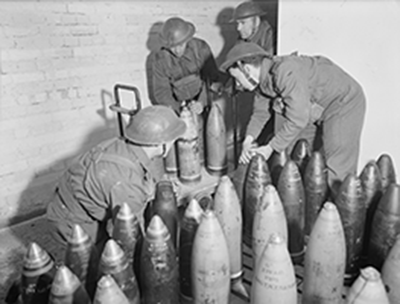
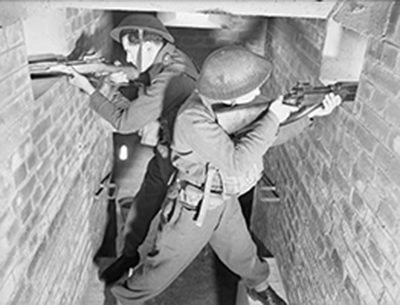
Image: Imperial War Museum photos of the ECDB at Great Yarmouth
The Later History, 1942 - 1945
From the summer of 1942 the possibility of invasion sharply diminished and so a series of cuts were planned to release men for other tasks. In December 1943 Bawdsey was put under ‘Care and Maintenance’, leaving one officer and seven regular gunners with the balance made by the Home Guard. The final closure of the battery took place in the spring of 1945.
The Site Today
Today heavy erosion by the sea has taken its toll although new beach defences are much in evidence. Over the last ten years the two searchlight emplacements and all the pillboxes with the exception of one from the First World War have been lost to the sea.
Although the overhead concrete structures for the gun houses have been removed, the gun houses and magazines are in good condition. The battery observation post (which is on private land and dangerous to enter) is one of the best preserved examples of its kind, although the metal frame with ‘Prisoners of War’ is an addition by a post-war artist.
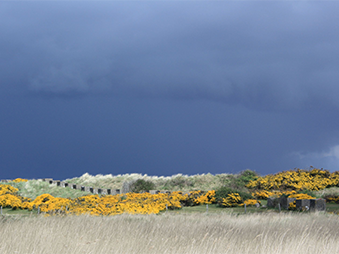

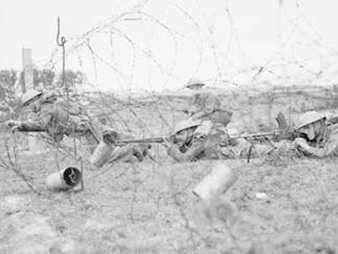
Second World War Guidebooks
a series of four guidebooks to Suffolk's Second World War archaeology
Discover More »